THE SWISS GRIND GOES ON
No rest for the sailors of Alinghi Red Bull Racing whose testing programme got immediately underway back in Barcelona on Monday after a fast tow along the coast from Vilanova i la Geltrú. As a measure of just how seriously the Swiss are taking this America’s Cup, they were the only team out on the water which quickly turned into a full-on session as the breeze built along the waterfront.
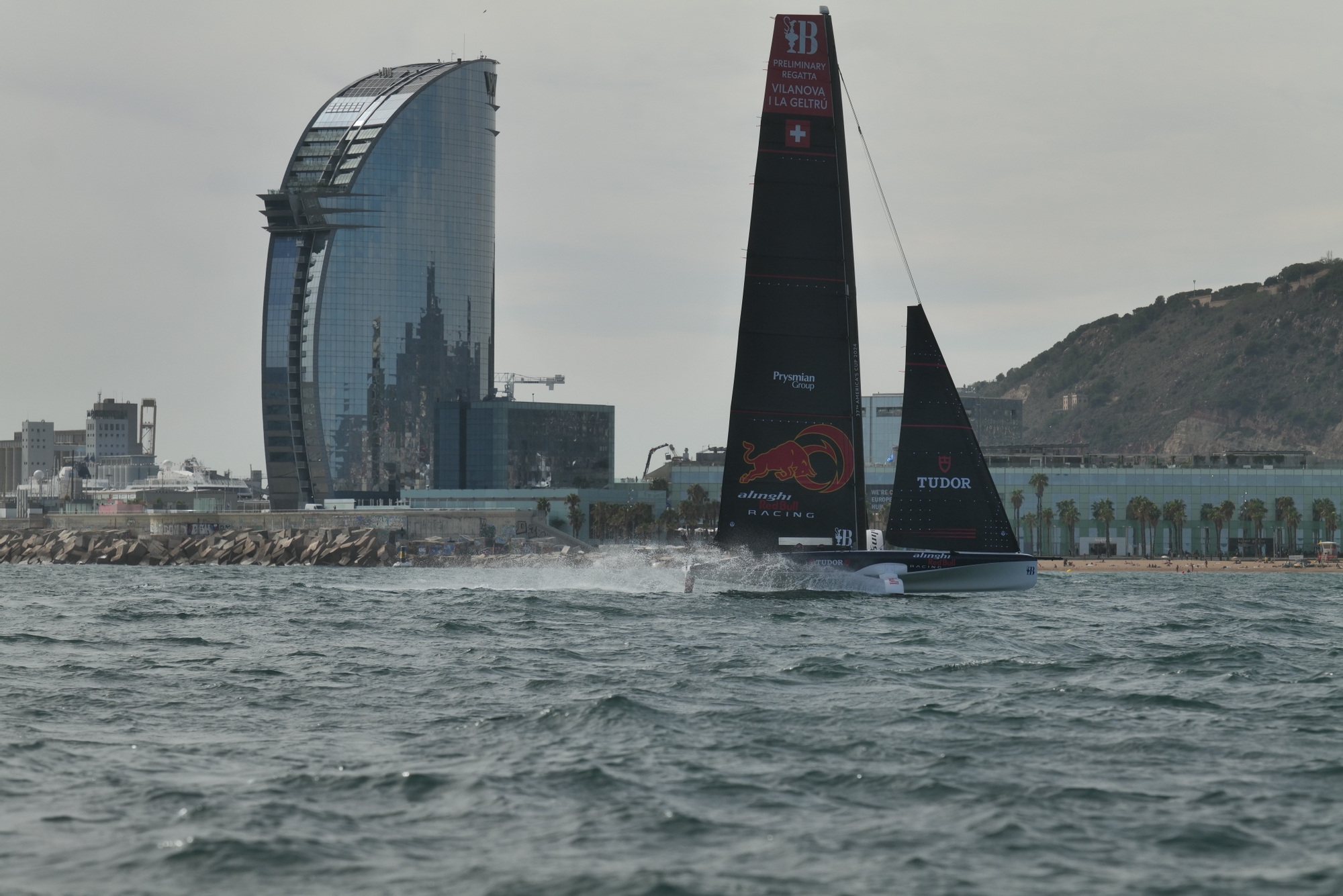
Alinghi Red Bull Racing more than impressed in the first Preliminary Regatta both on the water and on shore. Their operations are first-class and what was abundantly clear was that they had the speed in a straight-line and it was only the manoeuvres at the critical points that need polishing. That’s perfectly achievable, and with a relentless dedication to improvement, which has been a hallmark of this young team fused with wise heads, expect to see the Swiss winning races in Jeddah in a few weeks’ time.

But Monday was all about getting immediately back into the routine and it was Lucien Cujean and Nico Charbonnier who took the helming pods whilst Jason Waterhouse and Nils Theuninck supported on trim in a strange, converging wind pattern that was more than challenging.
The aim of the session was sail evaluation and Alinghi Red Bull Racing broke out an all new J3-1 LE jib replete with a million tell tales arranged in arrow formation for the drone and cameras to pick up and assess. The new flat-cut, as you would expect from a sail that is more often than broken out in conditions around 15 knots, performed well with the middle tell-tales showing updraft flow to the mid-point by the sponsor’s logo both upwind and downwind whilst all the other tell-tales flowed horizontally in the apparent wind.
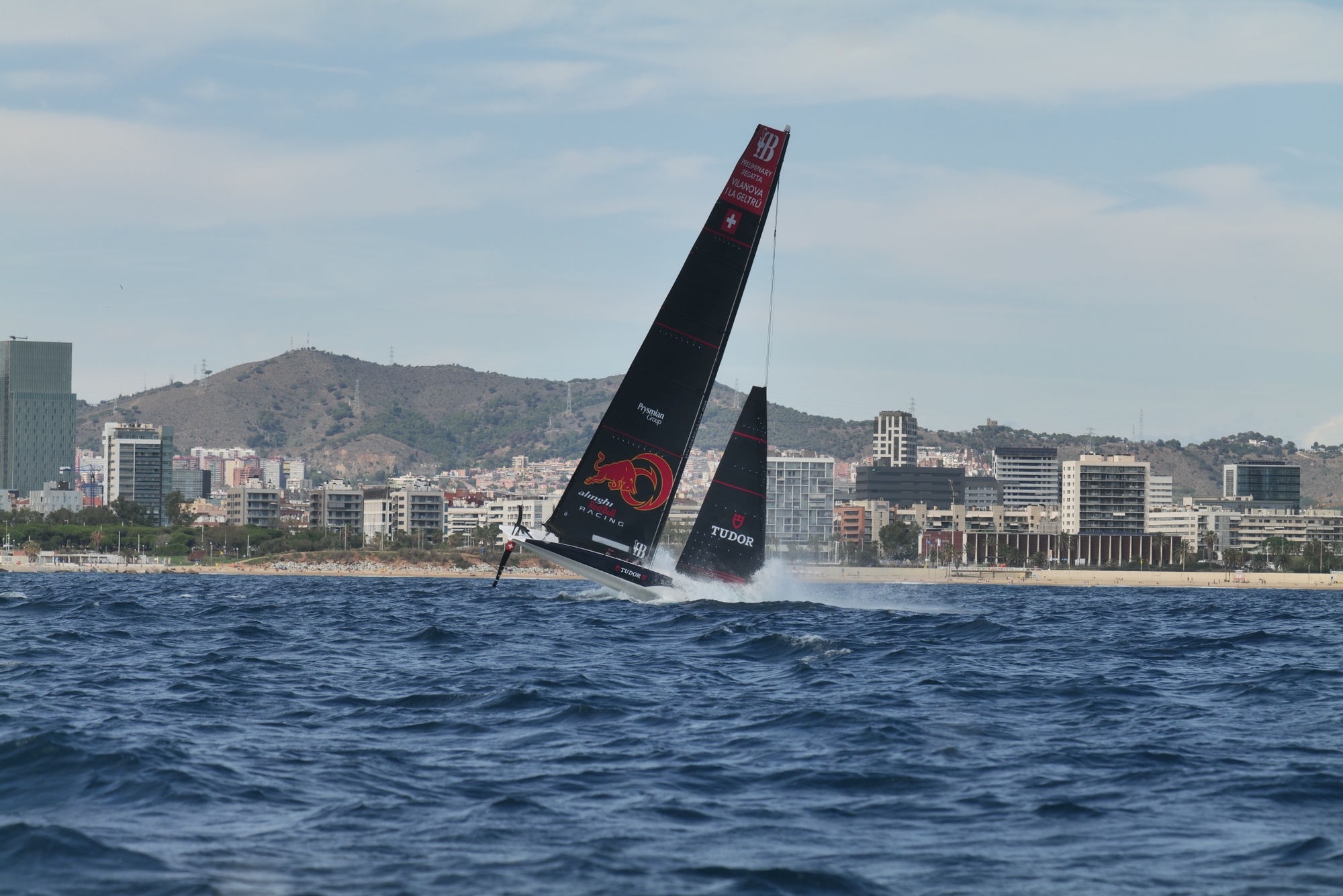
As the wind and state-state built considerably by mid-afternoon as the convergence cleared and 17 knots was recorded on the anemometer, the trimmers could be seen to be applying increased cunningham tension on the jib to the point where creases started to appear in the tack area. Over the waves, plenty of jib car action was observed and it was a tough ask to find an optimum ride height with the swells really picking up, so much so that a rudder evacuation downwind saw the tail-fin pop the surface and send the team directly into a nosedive that, on the corkscrew out, meant a capsize was inevitable.
After righting by the superb Alinghi Red Bull Racing shore team, a pump was put onboard, and the rig was inspected with much focus on the battens – one of the more fragile parts of an AC40. The call was duly made to try and lower sails and get back to the dock but the halyard lock on the jib stuck and the team towed back to the port and flatter waters to sort the issues out. Positive day on the water for the Swiss who sent out a clear signal to the rest of the America’s Cup community that they’re utterly committed to their programme.
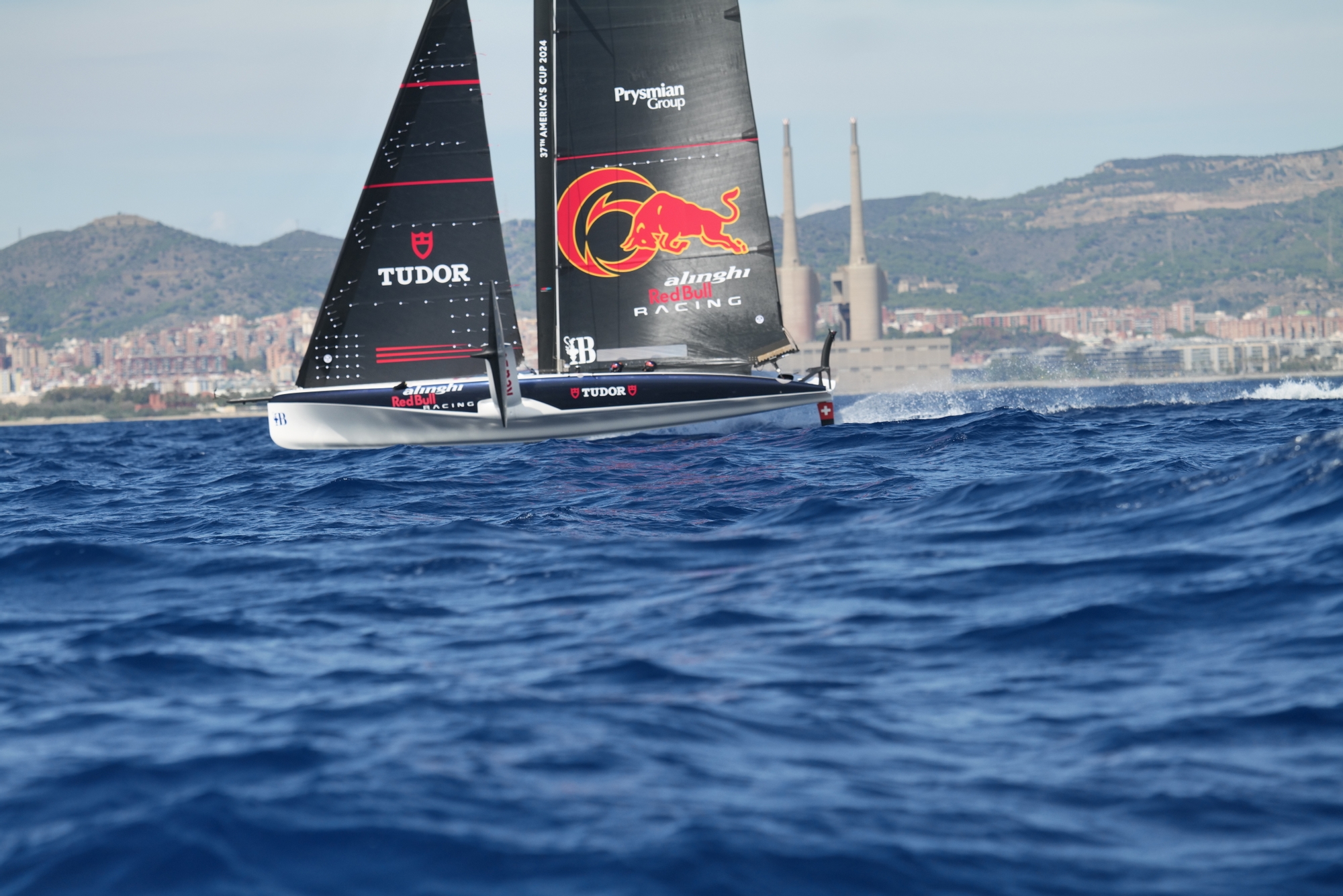
Speaking afterwards, Sailing Team Adviser Pietro Sibello, one of the great hires for the Swiss in this cycle described the day saying: “We took today the opportunity as the boat was coming back this morning to just hoist the sails and get some hours of training. We had another crew jumping in, ready and waiting for this moment, and we did some sail testing. It was a good day, difficult in terms of conditions, but at the end we got what we needed.”
Talking about the effects of the nosedive, Pietro intimated that is was safety-first, saying: “You know when you nosedive like that, the rig gets some stress, so we were taking care of the battens at the top of the rig. We decided to drop the main, but the programme was done for the day.”
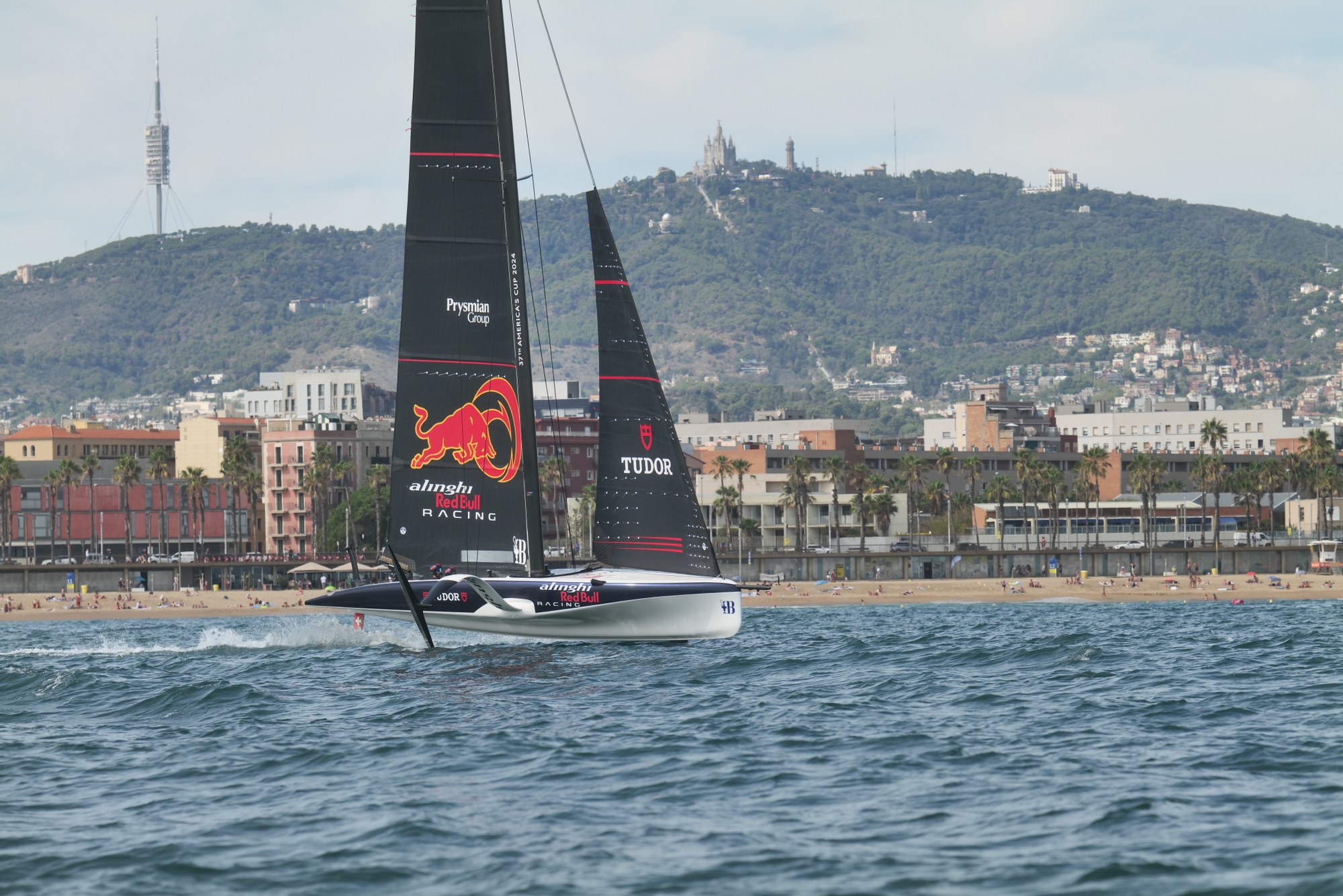
Reflecting on a solid performance in Vilanova, Pietro took away a lot of positives, adding: “I think first of all we had the chance to really understand what we're doing here in Barcelona at our base in tricky conditions, so this was a good test with super light, light-medium conditions. I think the team really did well for the first event and we take a lot of learnings of course, and we know now where to put our focus to improve the most.”
And what of the coming weeks? This crucial period where, in just one year’s time, the Challenger Selection Series will be in full flight are a super-premium for all the teams as they seek to get a handle on possible conditions that they may face. Pietro sees the focus clearly, saying: “Yeah for sure for sure we will be sailing here during the period of the racing, we’ll have a mix of the AC40s and then the AC75. Of course, the AC75 is a bigger priority in this and also for our project in the system testing and other stuff.”
Hats off to Alinghi Red Bull Racing where the grind never stops. (Magnus Wheatley)
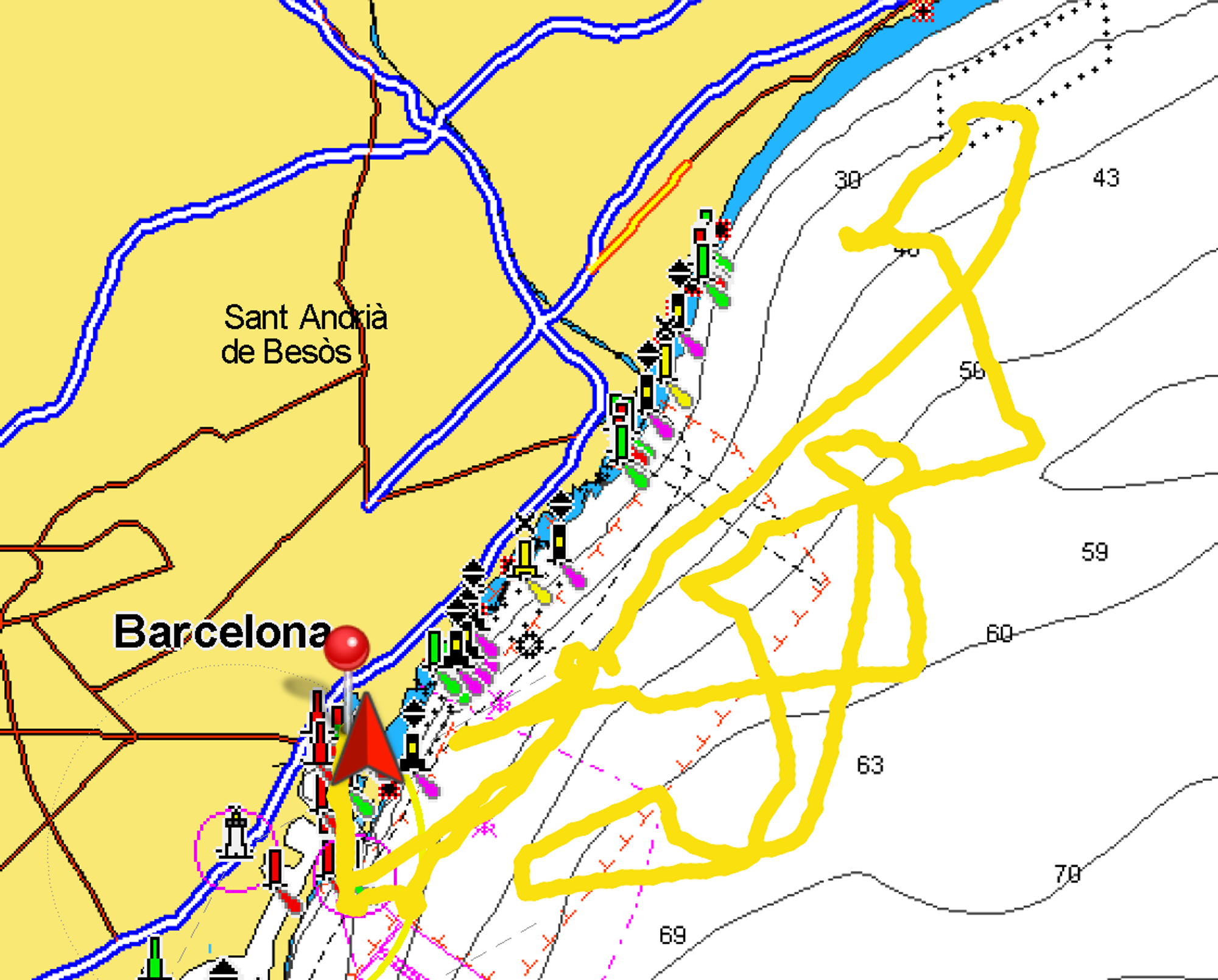
On-Water Recon Unit Report: Alinghi Red Bull Racing began by towing the AC40–7 from Vilanova i la Geltrú, docking in at their Barcelona base at 10:20. The yacht was prepared for a day of sail testing, and docked out by 11:30.
Outside the port entrance, the yacht's M1-2 OD mainsail was hoisted alongside the chase boat, followed by the new J3-1 LE jib. This jib featured extra tell-tales in the luff, and two sets of square formations positioned at the tack and clew of the sail. The tell-tale configuration was identical on either side of the sail and was also setup identically on the J3-1 OD jib.
Wind conditions varied with time and location. At 12:15, the inshore areas near the city measured 3-5kn west wind, while the sailing area close to the Forum encountered stronger West breeze coming through the valley. By 13:10, the thermal wind started to increase, however when measured, we were located in the convergence area, with wind inshore and offshore significantly stronger (≈14kn) than the 7-9kn measured. By the end of the session in the Barceloneta sailing area, wind speeds up to 17kn from 210° and slowly turning to the right.
Offshore sea conditions were notable with wave heights ranging from 0.9-1.5m, coming from 185° with a consistent 6-second period. In contrast, the inshore waters remained relatively calm.
The crew for the day comprised of helmsmen Phil Robertson and Nico Charbonnier, with Lucien Cujean, Jason Waterhouse, and Nils Theuninck serving as trimmers.
The initial sail with the J3-1 LE jib was brief due to insufficient wind. Post-release from the tow line, the yacht could only maintain flight for a short duration. The team adjusted the jib before rehoisting, then towed further North towards the stronger winds by the Forum sailing area.
The recon unit caught up with the team for the final minutes of their sailing stint, which then saw the switch between the J3-1 LE to the J3-1 OD jib. With the one design jib up, the yacht sailed a long upwind beat on each tack, followed by two long runs on each gybe. The jib was then exchanged back to the J3-1 LE and the drill was repeated.
The session came to an end with a big nosedive after exiting a gybe. This resulted in a capsize due to the windward foil arm not being lowered as the yacht was heeled over on its side after the nosedive. After righting the boat, the sailors inspected the mast, suggesting potential concerns. Water was also pumped out of the boat. The mainsail was eventually dropped, but the jib was not able to be lowered, requiring a tow back to port to safely lower it.
The recon unit covered almost 40 Nautical Miles observing the team over just under four hours on the water.